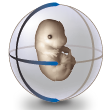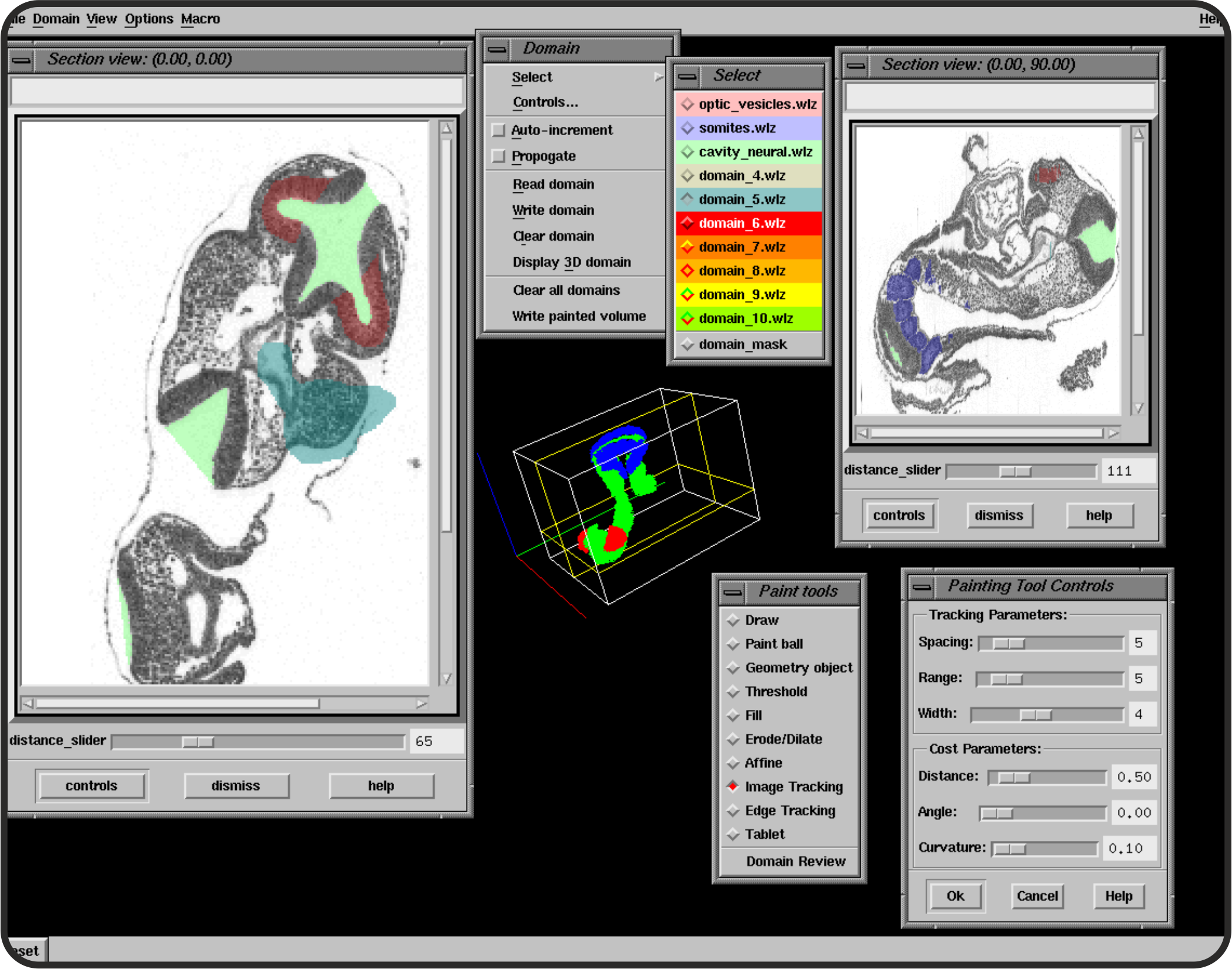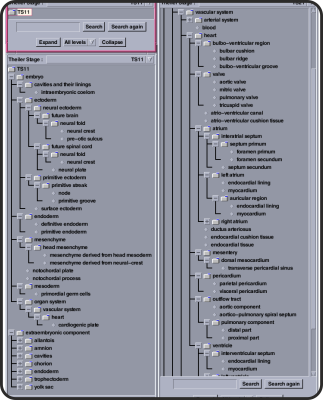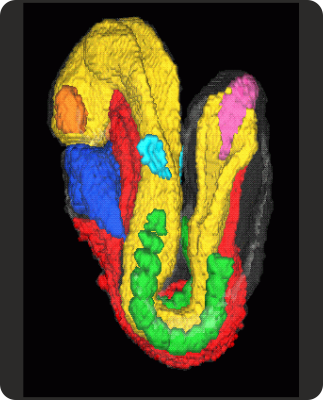The Edinburgh Mouse Atlas Project: School Tutorial - Defining Anatomy
To be able to enter textual data into a database it is important that any words or terms that are used have only one meaning. Otherwise the information in the database may be inconsistent. The language used to describe the embryo consists of anatomical names so we have to define these and delineate, or identify, the named parts of the embryo in our models. This allows us to go from a text description to a spatial description and visa-versa. We call the process of delineating the parts of the embryo painting and use a program that allows us to paint in 3D directly. These two steps, naming the parts and painting the parts are shown below. This process allows us to delineate a set anatomical domains. These domains are stored in a database which can be accessed via the web.







